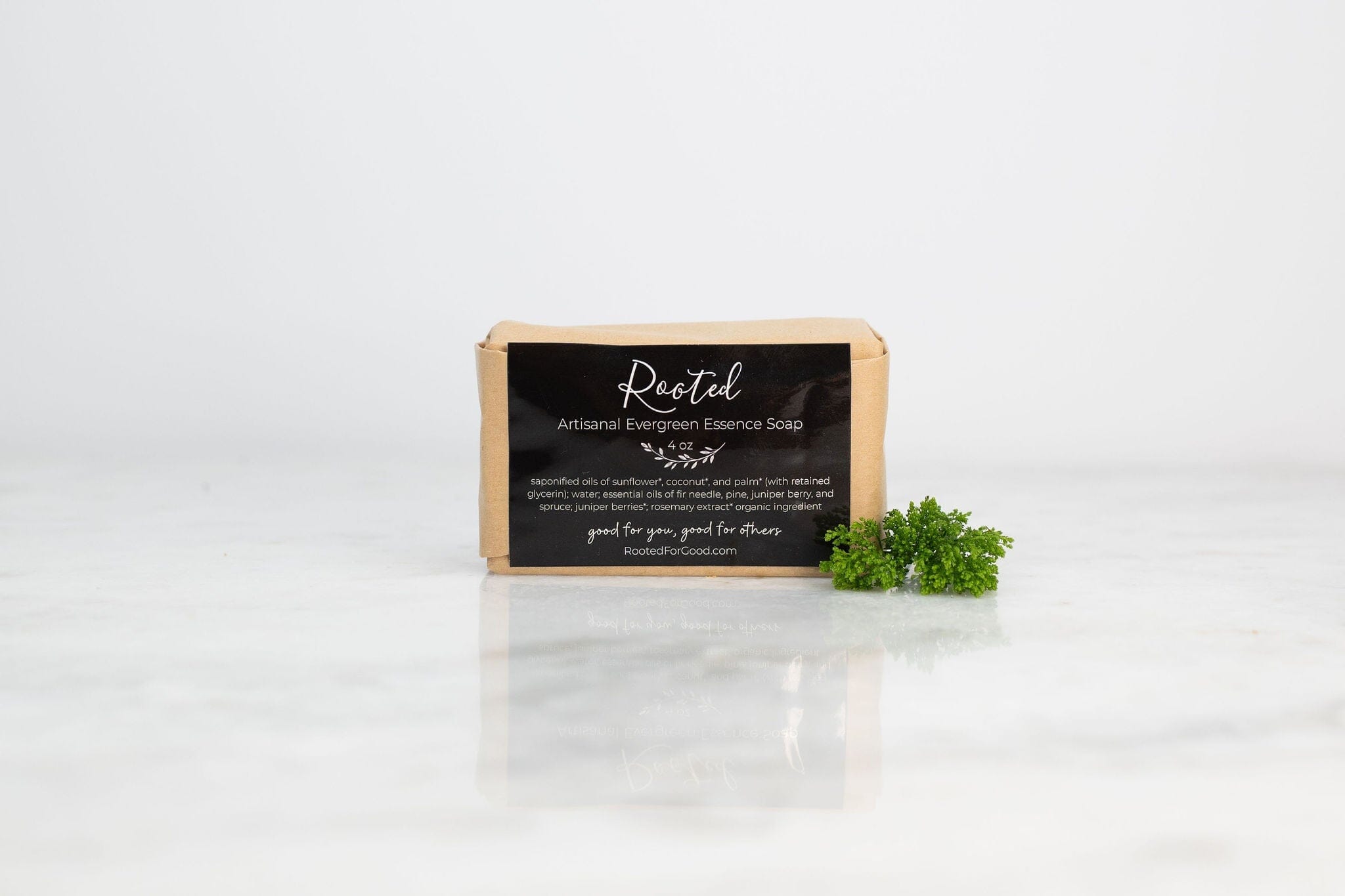Key Takeaways
- The "natural" label on PMS relief products may not always be trustworthy.
- It's important to carefully read ingredient lists to avoid mystery chemicals.
- Choosing products that genuinely support wellbeing is essential for families.
- Experience and expertise can guide better decisions in selecting PMS relief options.
Table of Contents
- Is Your PMS Routine Supporting Real Beauty?
- What's Really Happening in Your Body During PMS?
- What Are Essential Oils, And Why Do They Matter for PMS?
- The Science: Do Essential Oils Actually Help PMS?
- Best Essential Oils for PMS Relief: My Founder's Shortlist
- Peppermint, Bergamot & Geranium - The Symptom Specialists
- How Essential Oils Work for PMS: Gentle Support for Real Life
- Safe Use: How to Apply Essential Oils for PMS Symptom Relief
- Simple At-Home PMS Essential Oil Routine (For Real-Life Schedules)
- Who Benefits Most? Finding the Right Fit for Your Needs
- Essential Oil for PMS: How Different Options Stack Up
- When Essential Oil for PMS Isn't Working: Troubleshooting Guide
- Safe Storage and Handling: Protecting Your Family
- Creating Your Long-Term Essential Oil PMS Strategy
Is Your PMS Routine Supporting Real Beauty?
Have you ever wondered if that "natural" label on your PMS relief really means what it says? As a licensed cosmetologist and mom of six boys, I've spent countless evenings reading ingredient lists, searching for products that actually support our family's wellbeing without mystery chemicals or vague promises.
That three-month bucket list challenge to use only natural products changed everything for our family of eight. Real beauty already exists, your skincare should support it, not mask it with synthetic fragrances or hidden toxins. When it comes to essential oil for PMS relief, I've learned the difference between products that truly work and those that simply smell nice.
For those seeking a natural solution, the Relief - Ache & Pain Roll-On Blend is a gentle, effective option that can be easily incorporated into your PMS routine.
What's Really Happening in Your Body During PMS?
PMS affects up to 85% of menstruating women, causing a combination of physical and emotional symptoms in the two weeks before your period. Your hormone levels, particularly estrogen and progesterone, fluctuate dramatically, triggering everything from mood swings to physical discomfort.
The most common symptoms include:
- Physical: Cramps, bloating, breast tenderness, headaches, fatigue
- Emotional: Irritability, anxiety, mood swings, difficulty concentrating
- Sleep-related: Insomnia, restless nights, daytime drowsiness
You're not alone, and you're not imagining it. Managing these symptoms while juggling work, family, and daily responsibilities requires gentle, effective support that fits into real life.
What Are Essential Oils, And Why Do They Matter for PMS?
Essential oils are concentrated plant extracts that capture the natural compounds responsible for a plant's scent and therapeutic properties. Unlike synthetic fragrances, pure therapeutic-grade oils contain no artificial additives, fillers, or mystery chemicals.
What's in a Bottle: Transparency Matters
Rooted For Good includes: 100% natural ingredients, therapeutic-grade essential oils, plant-based carrier oils, properly diluted formulations
What we exclude: Parabens, synthetic dyes, artificial fragrances, phthalates, unnecessary fillers
The difference lies in sourcing and transparency. Our handcrafted blends use simple, recognizable ingredients because you deserve to know exactly what you're putting on your skin. When you're dealing with PMS sensitivity, the last thing you need is hidden irritants or hormone-disrupting chemicals.
The Science: Do Essential Oils Actually Help PMS?
Research supports using specific essential oils for PMS relief. A 2018 systematic review in the International Journal of Nursing Practice found that aromatherapy significantly reduced PMS symptoms, with lavender showing particular effectiveness for mood regulation and sleep quality.
Studies demonstrate different benefits by symptom type. For physical symptoms, peppermint oil reduced menstrual pain intensity by 40% in clinical trials, while topical application of clary sage decreased cramping severity. Emotionally, bergamot and rose oils showed measurable improvements in anxiety and mood stability during PMS weeks.
A 2019 study in Complementary Therapies in Medicine tracked women using essential oil blends for three menstrual cycles. Participants reported 60% improvement in overall PMS symptoms, with the most significant changes in sleep quality and emotional balance.
While research continues expanding, current evidence shows promise for gentle, natural symptom management. The key lies in using properly diluted, therapeutic-grade oils consistently rather than expecting instant results from synthetic alternatives.
Best Essential Oils for PMS Relief: My Founder's Shortlist
After years of formulating for my family's sensitive skin, I've identified six oils that consistently provide gentle, effective PMS support. Each addresses specific symptoms while remaining safe for regular use.
Lavender - The Gentle Multitasker
Best for: Sleep support, cramp relief, emotional balance
Lavender's floral, herbaceous scent promotes relaxation while its anti-inflammatory properties ease physical tension. Apply diluted oil to your abdomen before bed or diffuse during evening routines when PMS disrupts sleep.
Clary Sage - The Hormone Balancer
Best for: Mood swings, cramping, hormonal support
This warm, slightly nutty oil contains natural compounds that support hormonal balance. Clary sage works particularly well for emotional PMS symptoms, try inhaling directly from the bottle during stressful moments.
Rose - The Emotional Soother
Best for: Anxiety, emotional sensitivity, gentle skin care
Rose oil's sweet, complex fragrance provides emotional grounding during PMS mood fluctuations. Its gentle nature makes it perfect for sensitive skin, offering comfort without irritation.
What's not in my blends: I avoid eucalyptus and rosemary oils during PMS weeks, as their stimulating properties can increase anxiety. Our formulations never include synthetic fragrances, hormone disruptors, or undiluted oils that might irritate sensitive skin.
Peppermint, Bergamot & Geranium - The Symptom Specialists
Peppermint - The Natural Energizer
Best for: Mental fog, nausea, headache relief
Peppermint's cooling menthol provides instant clarity when PMS brain fog hits. Its antispasmodic properties ease digestive discomfort, while the invigorating scent combats fatigue. Use properly diluted, one drop on your temples (properly diluted) goes a long way.
Bergamot - The Mood Lifter
Best for: Depression, stress relief, emotional balance
This citrusy oil from bergamot oranges naturally elevates mood without overstimulation. Research shows bergamot reduces cortisol levels, making it ideal for PMS-related anxiety. Its gentle nature works well in daytime blends when you need emotional support.
Geranium - The Hormone Harmonizer
Best for: Skin changes, emotional stability, overall balance
Geranium's rosy, green scent supports both hormonal fluctuations and PMS skin breakouts. This versatile oil bridges physical and emotional symptoms, offering comprehensive support during your most challenging cycle days.
How Essential Oils Work for PMS: Gentle Support for Real Life
Essential oil molecules travel through your olfactory system directly to the limbic brain, the area controlling emotions, memory, and hormone regulation. This direct pathway explains why inhaling clary sage during a stressful moment provides almost immediate emotional relief.
Topical application works differently but equally effectively. When properly diluted with plant-based carrier oils, essential oil compounds absorb through skin to provide localized anti-inflammatory and antispasmodic effects. This is why massaging diluted lavender onto your abdomen eases cramping while promoting overall relaxation.
Real-world integration makes the difference between occasional relief and consistent support. Keep a roll-on blend in your purse for midday mood swings. Diffuse calming oils during evening family time when PMS irritability peaks. The key lies in consistent, gentle use rather than waiting for symptoms to become overwhelming.
Safe Use: How to Apply Essential Oils for PMS Symptom Relief
Proper dilution ensures safety and effectiveness. For topical use, blend 3-5 drops of essential oil for PMS relief with one tablespoon of plant-based carrier oil like jojoba or sweet almond. Apply this mixture to your lower abdomen, back, or pulse points twice daily during PMS weeks.
Safe Dilution Guidelines
Adults: 2-3% dilution (3-5 drops per tablespoon carrier oil)
Teens (13-17): 1% dilution (1-2 drops per tablespoon carrier oil)
Sensitive skin: 0.5% dilution (1 drop per 2 tablespoons carrier oil)
For inhalation, add 3-4 drops to your diffuser and run for 15-20 minutes. Direct inhalation from the bottle works for immediate relief, simply hold 6 inches from your nose and breathe deeply for 30 seconds.
Always patch test new blends on your inner wrist 24 hours before full use. If irritation occurs, immediately cleanse the area with plant-based carrier oil (never water, which can drive oils deeper into skin), then wash gently with mild soap.
Simple At-Home PMS Essential Oil Routine (For Real-Life Schedules)
This three-step routine fits into busy family schedules while providing consistent PMS support throughout your day.
Morning (2 minutes): Add 2 drops bergamot to your diffuser while getting ready. The uplifting scent combats PMS fatigue and sets a positive tone for challenging days.
Midday (30 seconds): Keep a clary sage roll-on in your purse or desk drawer. Apply to wrists and behind ears when mood swings or stress peak. The portable format works anywhere, from carpool lines to office meetings.
Evening (5 minutes): Before bed, massage diluted lavender oil onto your lower abdomen using gentle circular motions. This ritual eases cramping while signaling your body to prepare for restorative sleep.
Safety Pause Points
Discontinue use if pregnant, breastfeeding, or managing diagnosed hormone conditions without consulting your healthcare provider. Some essential oils can interact with medications or affect hormone-sensitive conditions.
For more ways to support your body naturally, you might also enjoy these 3 essential oils for overall health and wellness.
Who Benefits Most? Finding the Right Fit for Your Needs
Essential oils work best for mild to moderate PMS symptoms including mood swings, sleep disruption, minor cramping, and emotional sensitivity. Women seeking natural alternatives to synthetic fragrances or those with sensitive skin often find our properly diluted blends gentler than conventional products.
Perfect for: Busy moms needing portable relief, teens learning natural self-care, women transitioning off hormonal birth control, anyone preferring transparent ingredient lists over mystery chemicals.
For those who experience nausea as part of their PMS symptoms, essential oil for nausea can offer additional support.
Essential Oil for PMS: How Different Options Stack Up
When choosing an essential oil for PMS, quality and transparency matter. Here's how different approaches compare for real relief:
| Feature | Rooted For Good | Mass Market Blends | MLM Essential Oils | Drugstore Roll-Ons |
|---|---|---|---|---|
| Ingredient Transparency | Full disclosure, no hidden fillers | Vague "natural fragrance" listings | Limited sourcing details | Synthetic fragrance common |
| Dilution Safety | Properly diluted for sensitive skin | Varies widely | Often requires separate carrier oil | Unknown concentrations |
| Family-Safe Formulation | Tested for household use | Generic safety warnings | Adult-focused marketing | Limited age guidance |
| Mission Impact | 10% supports transformation projects | Profit-focused | Commission-based structure | Corporate profits only |
The difference lies in intentional formulation. While other brands focus on marketing claims, our approach centers on honest ingredients that work for busy families managing real PMS symptoms.
When Essential Oil for PMS Isn't Working: Troubleshooting Guide
Sometimes your essential oil for PMS routine needs adjustment. Here's how to identify and solve common issues:
If you're not feeling relief after two weeks: Check your application method. Topical oils work differently than diffused scents. Try switching from inhalation to gentle abdominal massage with properly diluted lavender or clary sage.
If you experience skin irritation: Discontinue use immediately and cleanse the area with gentle soap and cool water. This usually indicates the oil wasn't diluted enough or you have a sensitivity. Always patch test on your inner wrist 24 hours before full application.
If the scent feels overwhelming during PMS: Your sensitivity to fragrances often increases during hormonal fluctuations. Switch to lighter oils like bergamot, use less product, or ensure better ventilation when diffusing.
When to consult your healthcare provider: If PMS symptoms severely impact daily life, last longer than usual, or essential oils cause persistent reactions, professional guidance is needed. Natural doesn't always mean sufficient for every situation.
Remember, effective relief sometimes requires patience and personalization. What works for one family member may need tweaking for another's skin sensitivity or symptom pattern. For more on the science behind essential oils and PMS, see this authoritative review of aromatherapy for PMS.
Safe Storage and Handling: Protecting Your Family
Proper storage ensures your essential oil for PMS remains effective and safe around children and pets.
Storage essentials: Keep oils in dark glass bottles, away from direct sunlight and heat sources. A bathroom medicine cabinet isn't ideal due to humidity fluctuations. Instead, choose a cool, dry closet or bedroom drawer that children can't access.
Shelf life reality: Most therapeutic-grade essential oils maintain potency for 2-3 years when stored properly. Citrus oils like bergamot have shorter lifespans, around 1-2 years. If your oil smells different or has changed consistency, it's time to replace it.
Child safety protocol: Always secure caps tightly and store bottles in locked containers or high shelves. Even small amounts can be harmful if ingested by curious toddlers. Teach older children that these are "medicine oils" requiring adult supervision.
Label your bottles with purchase dates and dilution ratios if you create custom blends. This simple step prevents confusion during stressful PMS days when clear thinking feels challenging. For more clinical research on essential oils and PMS, check out this clinical trial on aromatherapy for PMS.
Creating Your Long-Term Essential Oil PMS Strategy
Sustainable relief comes from consistent, gentle practices that fit your actual lifestyle, not perfect Instagram routines.
Start with one oil and one method: Choose lavender for evening relaxation or peppermint for morning energy. Master this single approach before adding complexity. Many women find success with just clary sage diluted in a plant-based carrier oil, massaged onto the lower abdomen twice daily during PMS week.
Track what works: Note which oils help specific symptoms in a simple phone app or journal. After three months, you'll see clear patterns. Maybe rose oil helps emotional overwhelm but doesn't touch physical cramps, while properly diluted peppermint eases headaches but feels too stimulating before bed.
Adjust for life seasons: Your essential oil for PMS needs may change during stress, postpartum recovery, or perimenopause. What worked in your twenties might need modification in your forties. Stay flexible and listen to your body's changing responses.
Build your routine around existing habits. If you already apply lotion after showering, add a few drops of your chosen oil to that routine rather than creating entirely new steps. For more natural wellness tips, explore our article on essential oil for sleep.
Frequently Asked Questions
How do essential oils like peppermint, bergamot, and geranium help alleviate PMS symptoms?
Peppermint, bergamot, and geranium essential oils gently support PMS relief by easing cramps, reducing mood swings, and calming fatigue. When properly diluted and used in aromatherapy or topical blends, they offer soothing effects that align with natural body rhythms without harsh chemicals.
What should I look for on ingredient labels to ensure my PMS relief products are truly natural and safe?
Look for simple, recognizable ingredients with no hidden toxins or fillers. Avoid vague terms and mystery chemicals by choosing products that list 100% natural ingredients and therapeutic-grade essential oils, and steer clear of synthetic fragrances or additives.
How can I safely incorporate essential oils into my daily routine for effective PMS symptom relief?
Use essential oils properly diluted in a plant-based carrier oil and apply them to pulse points or areas of discomfort. Incorporate them into a simple routine, like a gentle roll-on blend or diffusing aromatherapy, making sure to follow safety guidelines for sensitive skin and avoid overuse.
What are the most common physical and emotional symptoms of PMS that essential oils can help address?
Essential oils can help ease physical symptoms like cramps, bloating, breast tenderness, headaches, and fatigue. They also support emotional wellbeing by calming irritability, anxiety, mood swings, and difficulty concentrating during PMS.





